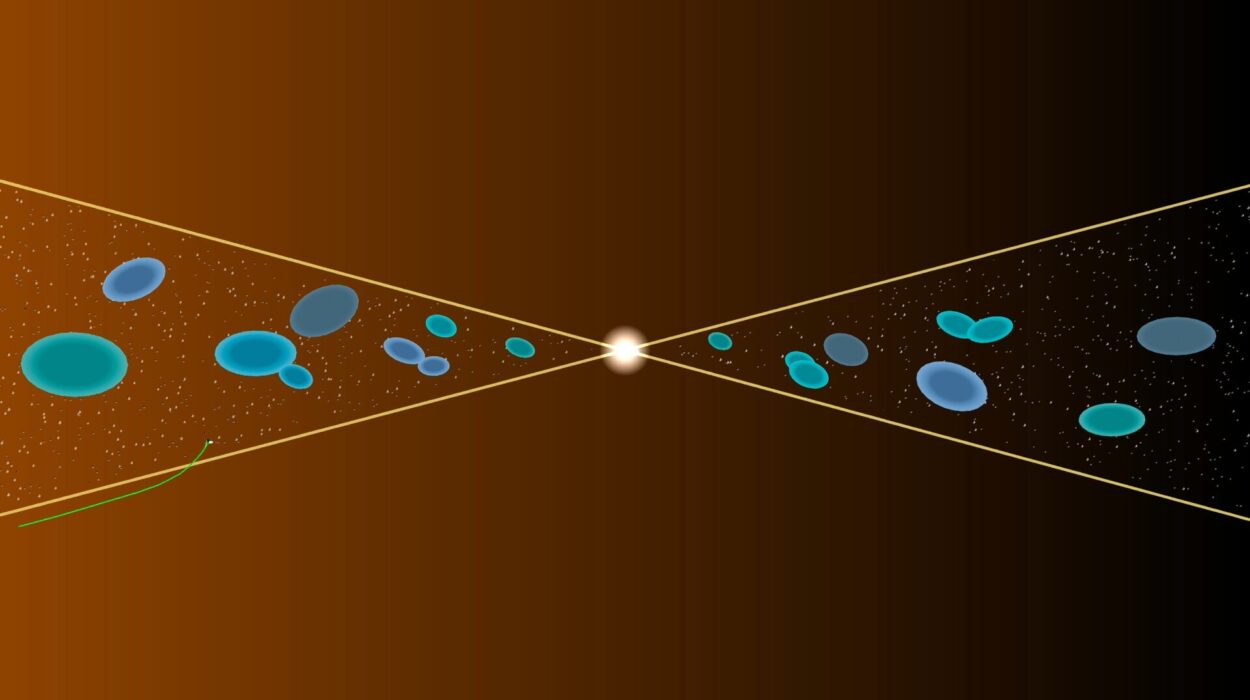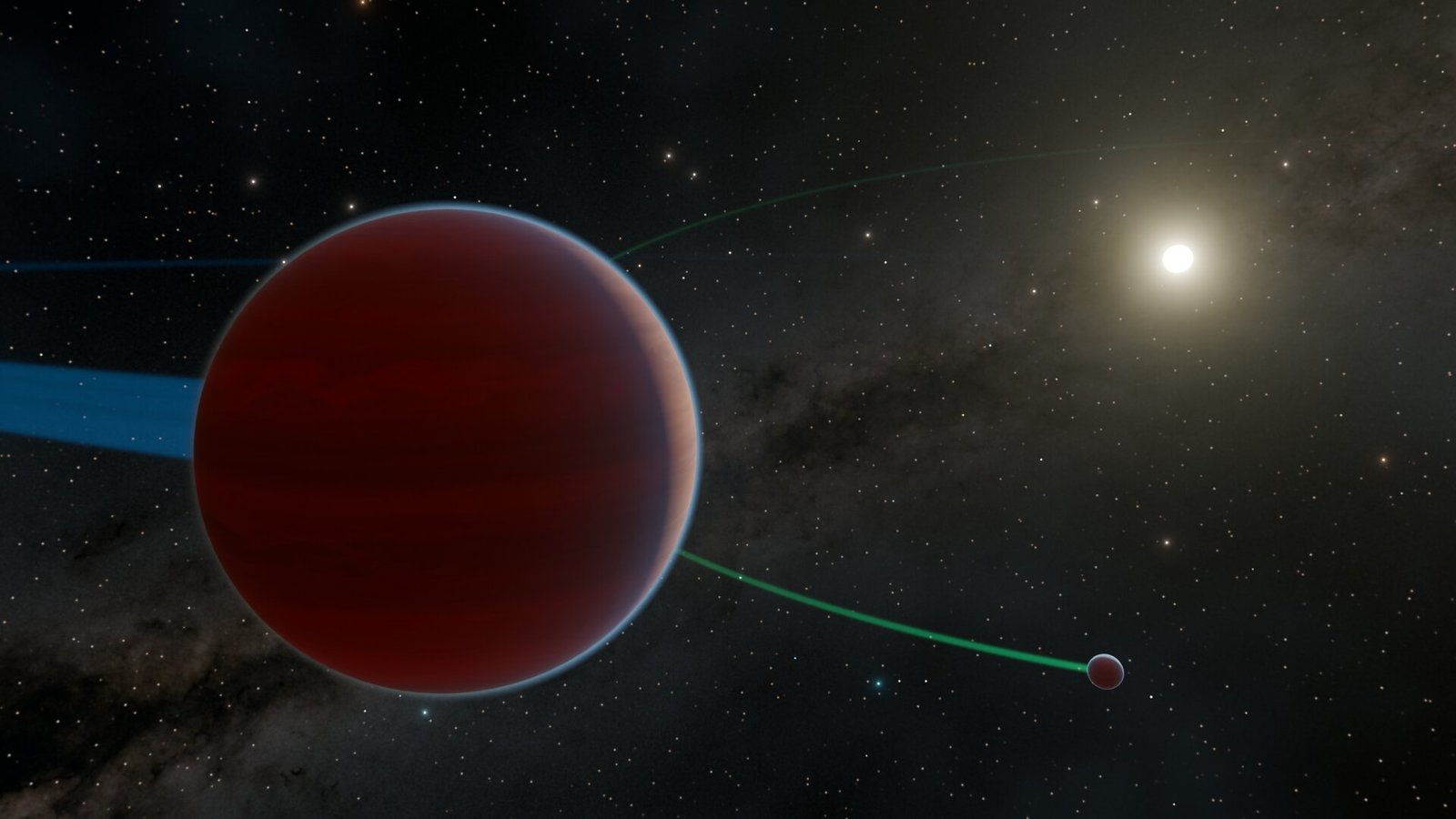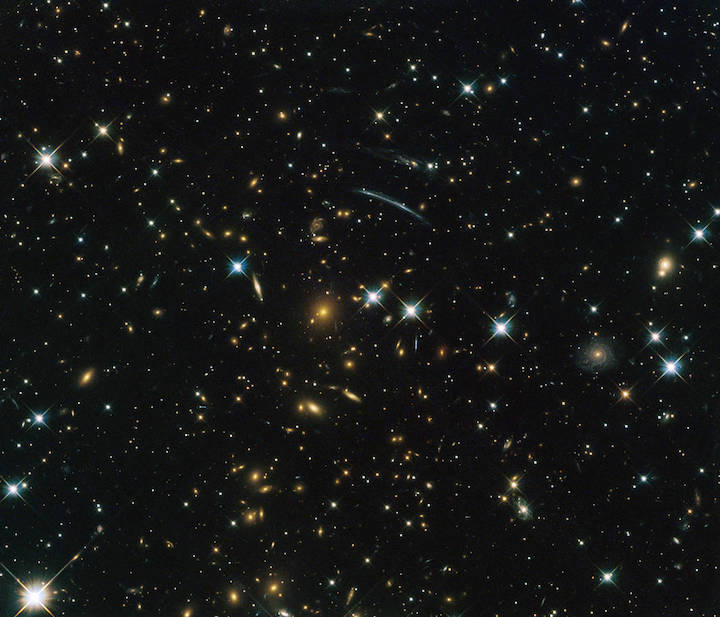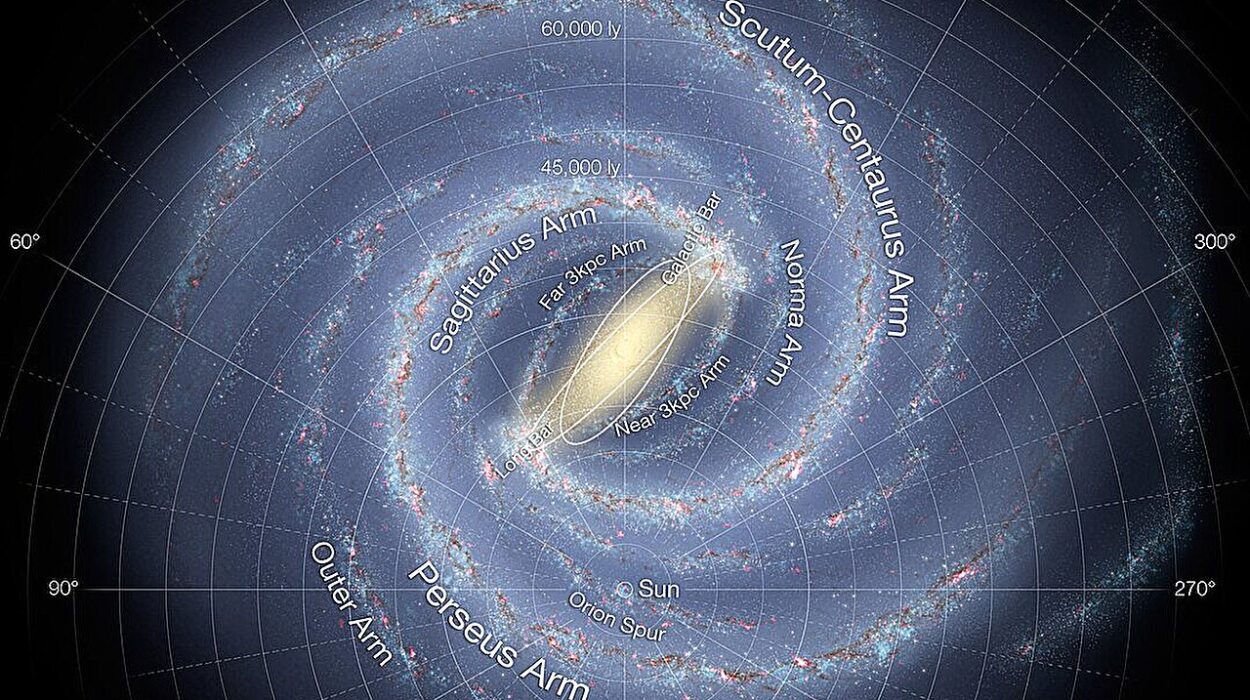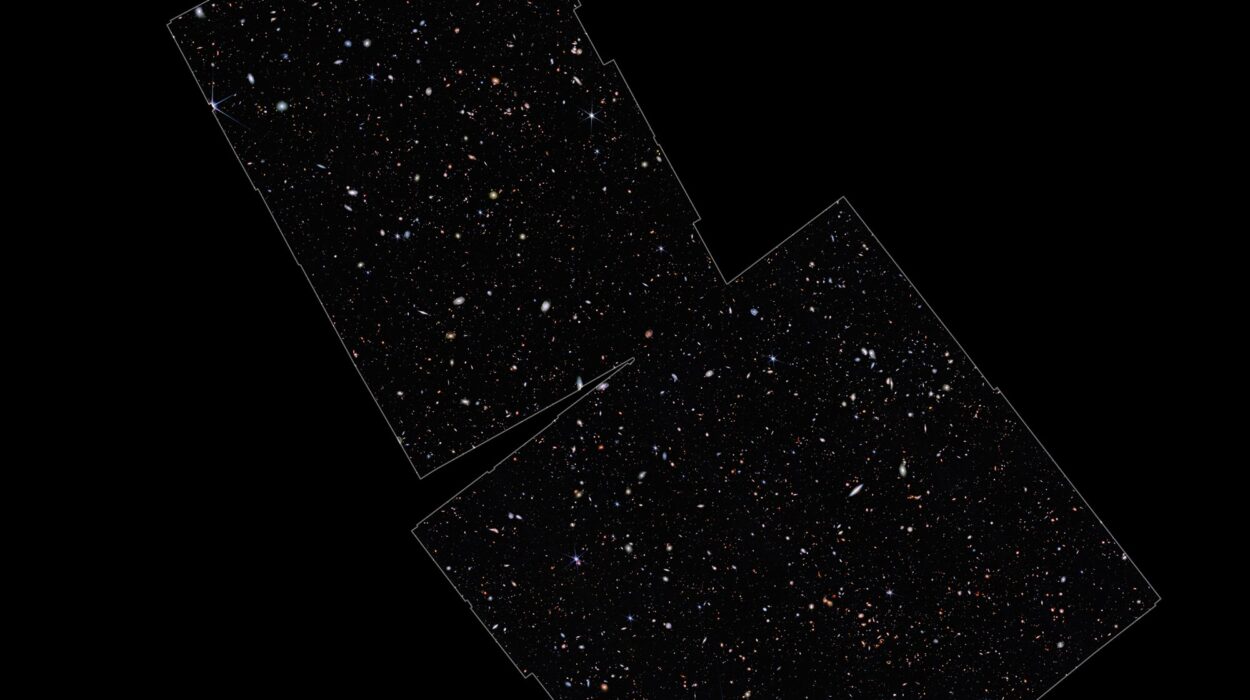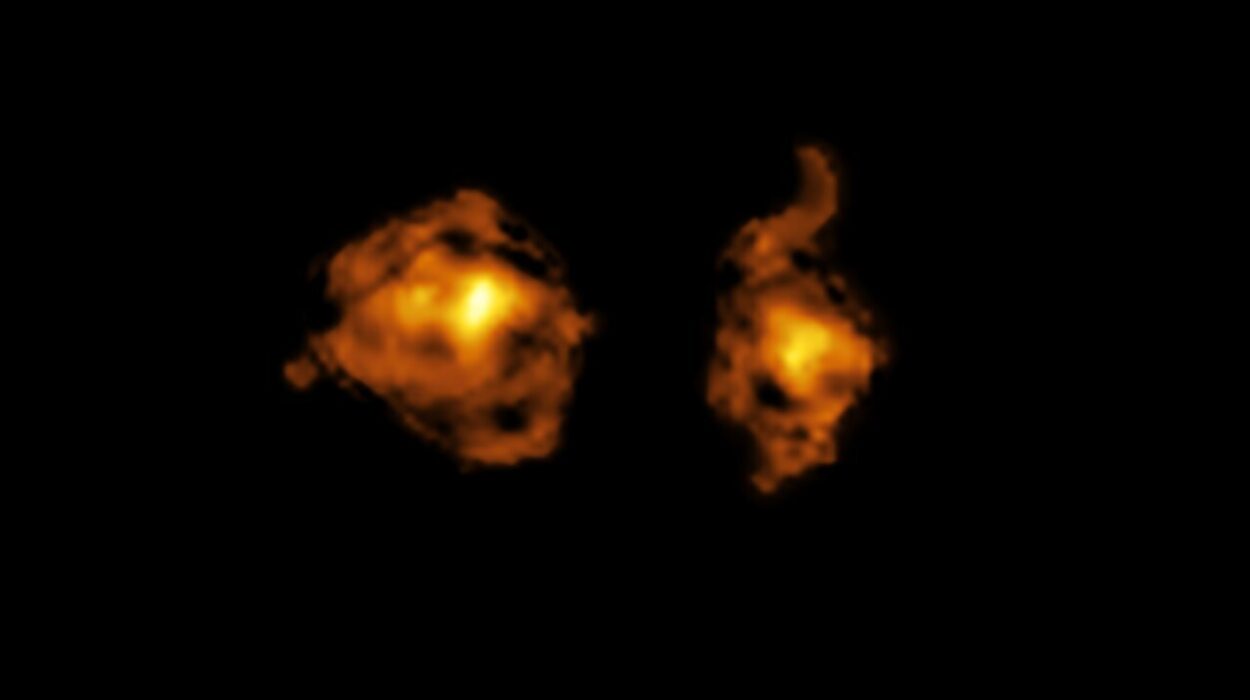The night sky may seem silent and still, but beyond its tranquil beauty lies a restless and ever-changing universe. Among the vast clouds of gas and dust drifting through the Milky Way, new stars are constantly being born — each one a spark in the grand cosmic story. Recently, a team of astronomers led by Sun Mingke, a Ph.D. student from the Xinjiang Astronomical Observatory of the Chinese Academy of Sciences, uncovered a new chapter in this story.
Using the CO (J=1–0) molecular line data obtained from the 13.7-meter millimeter-wave telescope at the Purple Mountain Observatory’s Delingha site, the team conducted an in-depth study of a molecular cloud known as G34. Their findings, published in Astronomy & Astrophysics, reveal the intricate dance of giant cosmic filaments — long strands of interstellar gas — colliding and intertwining to give rise to new stars.
The Cradle of Stars: Molecular Clouds in the Milky Way
Stars are not born in isolation. They emerge from vast molecular clouds — immense, cold reservoirs of gas and dust scattered throughout our galaxy. Within these clouds, gravity slowly gathers material, forming dense filaments that twist and coil like luminous ribbons across the heavens. These filaments, often hundreds of light-years long, serve as the cosmic nurseries where stars begin their life cycles.
In recent years, astronomers have discovered that these filamentary structures are not passive formations. Instead, they are dynamic, turbulent, and often in motion — colliding, merging, and collapsing under their own gravity. Such interactions are thought to be a critical trigger for the formation of massive stars, the brilliant giants that later explode as supernovae and enrich the galaxy with heavy elements.
Discovering G34: A Window into the Early Stages of Star Formation
The G34 region, located within our Milky Way, is one such molecular cloud complex. It has long intrigued astronomers because of its filamentary structures and potential for star formation. Sun Mingke and his collaborators focused on this region to understand how collisions between filaments might shape the birth of stars.
Their observations revealed two enormous filaments, designated F1 and F2. By carefully mapping the spatial distribution and measuring the velocity of gas within these filaments, the researchers discovered clear evidence that F1 and F2 are in the process of colliding. This finding provides rare observational proof of a phenomenon that has been theorized but seldom directly witnessed — the head-on interaction between massive cosmic structures that may serve as the spark for stellar creation.
Signs of Collision in the Cosmic Web
The data gathered from the Purple Mountain Observatory’s telescope painted a vivid picture of motion and interaction. The filaments are not static; their velocity patterns indicate a flow toward a common center, consistent with an ongoing collision. This motion suggests that gravitational forces are drawing the filaments together, compressing gas and increasing density in localized regions — the necessary conditions for star formation.
Interestingly, the researchers noted that the amount of dense gas — measured as high-column-density material with N(H₂) > 1.0×10²² cm⁻² — is relatively low in both filaments. Only 4.16% of the gas in F1 and 8.33% in F2 reach these high densities. Across the entire region, just one dense clump appears associated with an infrared dust core detected by the WISE space telescope at a wavelength of 22 micrometers.
These results suggest that the filaments are still in an early stage of evolution. The process of collision has begun, but it has not yet advanced far enough to form massive stars. Instead, the system is likely giving rise to small, low-mass stars — the cosmic equivalent of gentle sparks before the great blaze.
The Power of Gravity in Filament Evolution
One of the most striking findings of the study involves the relationship between motion and gravity within these structures. The velocity and line mass of the filaments both increase from their ends toward the center, forming a distinct pattern that mirrors the distribution of gravitational potential. This pattern indicates that gravitational energy is being converted into kinetic energy — a transformation that fuels the dynamic behavior of the filaments.
In simpler terms, gravity is not just pulling matter inward; it is setting it in motion. This movement feeds turbulence and compression, both of which are essential for triggering the collapse of gas into new stars. It is a beautiful paradox — the same force that binds the universe together also drives its ceaseless change.
The Quiet Before the Storm: Absence of Stellar Feedback
Another key observation from the study is what isn’t present. Despite the ongoing interactions, no H II regions — clouds of ionized gas created by young, massive stars — were detected in association with the filaments. This means that the structures have not yet been influenced by the energetic winds and radiation that such stars produce.
Without this feedback, the dynamics of F1 and F2 are governed almost entirely by their own gravity. They exist in a pure, early phase of star formation — a rare glimpse into a process that often unfolds behind the shroud of dust and time. The researchers’ findings strengthen the idea that collisions between filaments are a crucial mechanism in the earliest stages of a molecular cloud’s life, setting the stage for future bursts of star formation.
A New Understanding of the Cosmic Tapestry
The discovery in G34 adds an important piece to the puzzle of how stars — and by extension, galaxies — evolve. It shows that gravity and motion are deeply intertwined in the universe’s design. The filaments are not random strands of gas; they are dynamic, gravitationally bound systems constantly reshaped by invisible forces.
This study also reinforces the idea that the universe is in perpetual motion, even on the largest scales. What appears calm from Earth’s perspective is, in reality, a realm of continuous transformation. The gentle glow of a star seen through a telescope today may have begun millions of years ago in a collision just like the one between F1 and F2 — a moment of chaos giving birth to light.
More information: Mingke Sun et al, Colliding filaments in the molecular cloud G34, Astronomy & Astrophysics (2025). DOI: 10.1051/0004-6361/202553851

